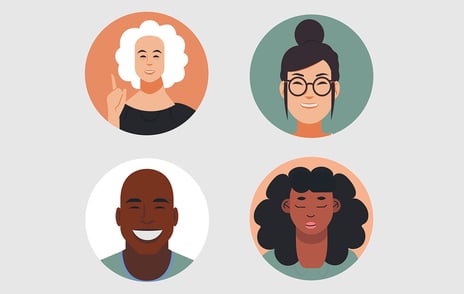Hybrid events are the way of the future when it comes to planning and managing events. After we enter a post-pandemic world, we will likely continue to see events provide both in-person and virtual registration options. This type of event planning requires a special kind of creativity and ingenuity, as it essentially involves planning two experiences at the same time.
While gathering restrictions are still in place, organization leaders should look forward in imagining what their events should look like once the majority of the population is vaccinated.
Benefits of hybrid events
- Less cost-prohibitive for attendees: Often, digital versions of tickets are free or priced at reduced rates. This broadens the audience, lending more reach for your organization, speakers, exhibitors, and sponsors.
- More environmentally friendly: Fewer in-person attendees means less travel and less waste, therefore making your event greener.
- Quality content: Content created for virtual audiences and recorded live sessions can be used in marketing materials for years to come.
- More budget friendly: With hybrid events, more attendees can be a part of your event without the additional costs that come with increased headcounts.
- Safety: Even with all safety precautions in place, gatherings with fewer people will lead to decreased health risks for attendees, speakers, and organizers.
Examples of past hybrid events
Hybrid events aren’t new, but it’s taken the global pandemic to truly see them as the way forward. Take a look at these three examples of events that combined both in-person and virtual elements. HubSpot and Apple both shifted their event structures to accommodate for the COVID-related restrictions, while Twitch’s 2019 event shows us a way we can look ahead.
2020 HubSpot INBOUND
Marketing giant HubSpot took its annual conference hybrid in 2020, with pre-recorded sessions that were streamed online to a virtual audience. The conference was presented in multiple formats, which made it accommodating, flexible, and engaging. Some sessions were pre-recorded with live Q&As, others were available on-demand, and some were entirely live streamed. There were also audio-only sessions, making it appealing for attendees suffering from a little screen fatigue.
2020 Apple WWDC
Apple was determined to move forward with its WWDC 2020 event — pandemic or not. Instead of presenting to a packed auditorium, the show kicked off with Tim Cook addressing a virtual audience from the empty auditorium of the Steve Jobs Theater. Virtual viewers watched from home as Apple developers and engineers presented major changes and product innovations through professional pre-recorded videos. The high-quality video production offered a healthy combination of speaker presentations and product shots.
2019 TwitchCon
While the 2020 event was canceled because of COVID, TwitchCon’s format is an interesting approach to what future hybrid events could look like. Twitch, the live streaming platform for gamers, hosted in-person events over three days, while inviting audiences at home to watch all streams remotely, including a live concert. This is not currently a COVID-friendly format, but it’s a great peek into what we can expect to see in hybrid events moving forward.
Tags:
Events Management
February 21, 2021

